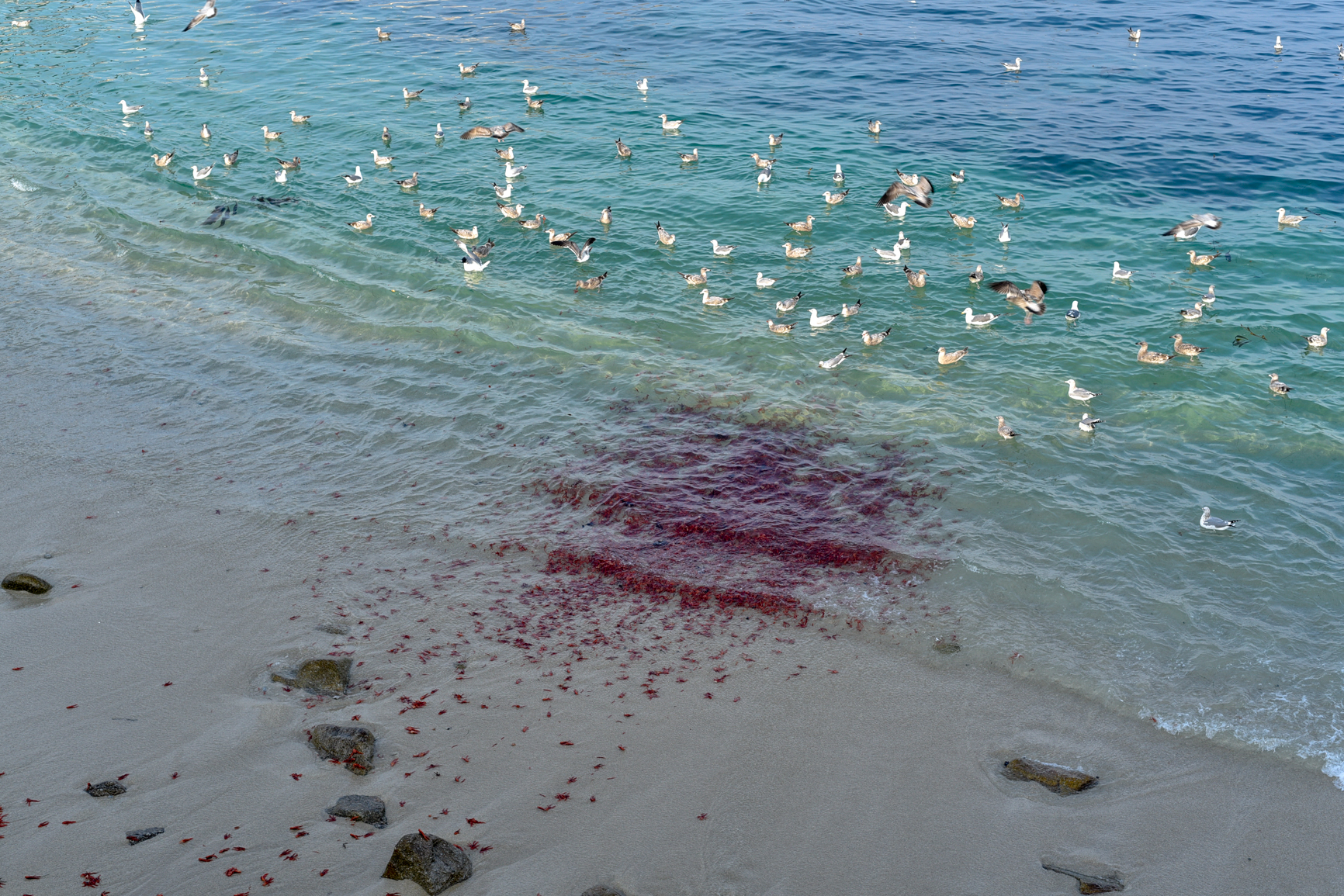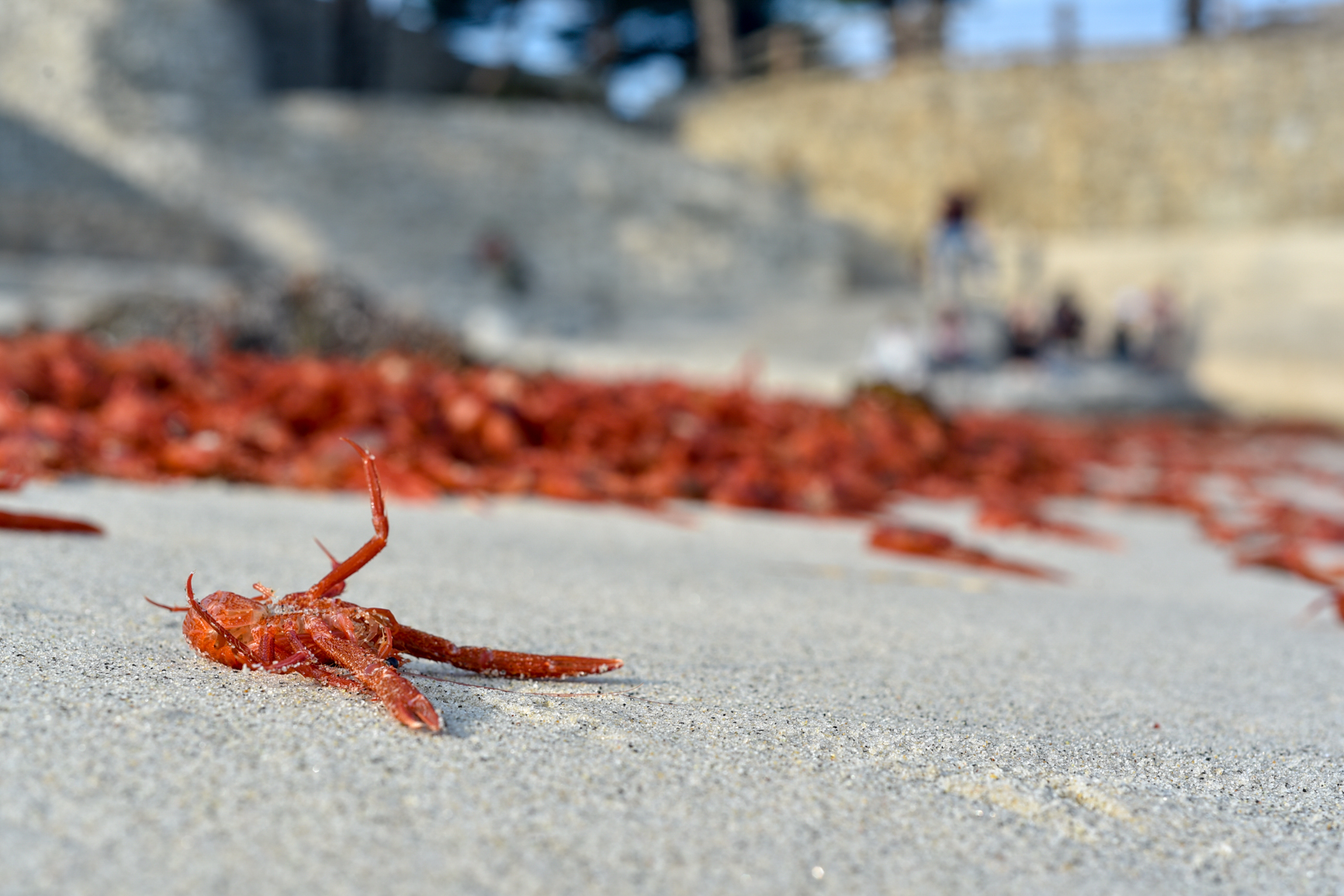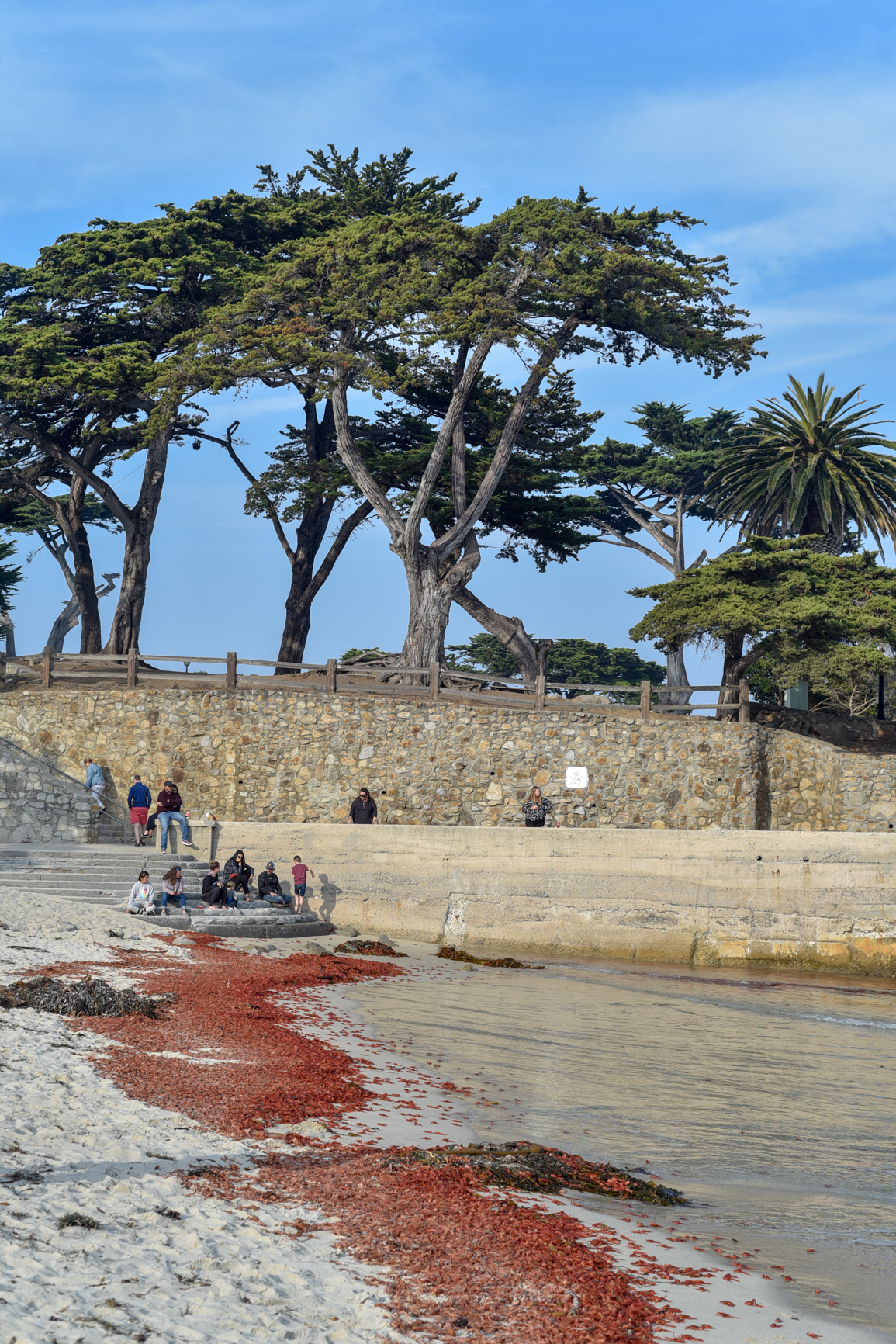Pelagic Red Crabs Return to Lovers Point in Pacific Grove
This article was originally published by the Monterey County Weekly.





MONTEREY, CA—While the number of tourists visiting Lovers Point might be dwindling this time of year, the popular beach has received thousands of unexpected visitors over the past few days: pleuroncodes planipes, more commonly known as the pelagic red crab or tuna crab. These tuna crabs (a favorite of both bluefin and albacore tuna) usually live in the warmer waters off the coast of Baja California, yet in recent years have washed up along the shores of Monterey Bay, particularly Lovers Point and Coral Street Beach, with increasing frequency.
It’s been commonly reported that the tuna crab is an “indicator species,” a harbinger of warm waters brought north by an El Niño event, though this isn’t necessarily the case, according to Elliott Hazen, a research ecologist with NOAA’s Southwest Fisheries Science Center.
“We know that these crabs are associated with warmer water,” Hazen says, stressing that there is no proven causation that tuna crabs making their way this far north is a precursor to an El Niño event—“only that their presence is correlated with generally rising sea temperatures.”
This could be precipitated by any number of factors, from isolated streams of warm water drifting towards shore to rising sea temperatures due to climate change.
The earliest reported instance of these tuna crabs washing ashore in Monterey Bay was in 1958, with a handful of occurrences since then—yet Hazen notes that tuna crabs have washed ashore with a much greater frequency since 2013 and that their frequent presence here is a new phenomenon.
From an ecosystem perspective, the appearance of tuna crabs is not necessarily a bad thing—they provide a trophic boon to the food chain, particularly the aforementioned tuna species—but their presence is certainly a sign of a changing environment.
Scientists are keenly interested in learning more about this phenomenon and welcome any method of gathering additional data. Hazen notes that anyone can become a citizen scientist, using smartphone apps such as iNaturalist to photograph and record sightings of tuna crabs in the area—even if it’s just a few of them.